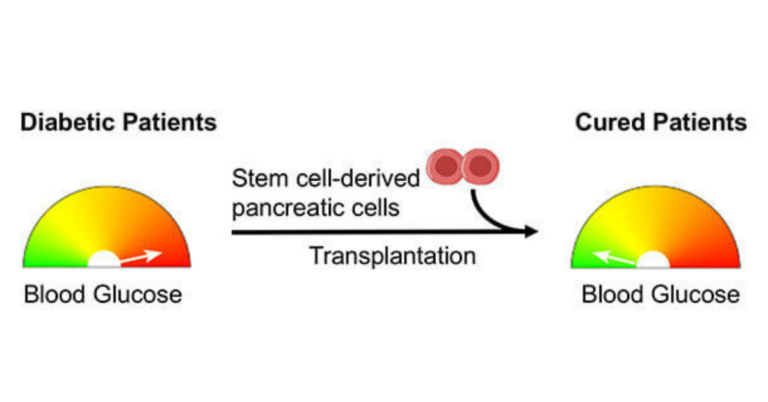The Promise of Stem Cell-Derived Brain Tissue for Neurological Repair
Stem cell-derived brain tissue holds promise in treating a wide range of neurological disorders. One of the key applications is in the regeneration of damaged or diseased brain tissue, offering hope for conditions such as stroke, traumatic brain injury, and neurodegenerative diseases like Alzheimer’s and Parkinson’s. These stem cell therapies have the potential to restore lost function and improve the quality of life for patients with these debilitating conditions.
Furthermore, the use of stem cell-derived brain tissue in research and drug discovery is opening up new avenues for understanding the complexities of the brain. By providing a model system that mimics the human brain, scientists can study disease mechanisms, test potential therapies, and screen for new drug candidates in a more accurate and relevant way. This approach not only accelerates the pace of scientific discovery but also offers new opportunities for developing targeted treatments for neurological disorders in the future.
The Mechanisms Behind Neurological Repair Using Stem Cell-Derived Brain Tissue
Stem cell-derived brain tissue holds immense potential in repairing neurological damage through various mechanisms. Once transplanted into the damaged area, these stem cells have the ability to differentiate into specific cell types needed for repair, such as neurons or glial cells. This process supports the restoration of damaged neural circuits and promotes the regeneration of functional connections within the brain.
Moreover, stem cells can also exert beneficial effects by producing growth factors and other molecules that support neuronal survival and repair processes. These paracrine effects help create a favorable microenvironment for healing and regeneration in the damaged brain tissue. Overall, the multifaceted mechanisms of stem cell-derived brain tissue offer promising avenues for neurological repair and hold great hope for patients with various neurological conditions.
Current Research and Clinical Trials in Stem Cell-Derived Brain Tissue for Neurological Repair
Recent advances in stem cell research have paved the way for exciting possibilities in treating neurological disorders. Clinical trials utilizing stem cell-derived brain tissue have shown promising results in repairing damaged neural pathways and promoting functional recovery in patients with conditions such as stroke and traumatic brain injury. Researchers are exploring the potential of these innovative therapies to restore lost neurological function and improve the quality of life for individuals affected by devastating brain disorders.
One key focus of current research is to better understand the mechanisms by which stem cell-derived brain tissue promotes repair and regeneration in the brain. By studying the interactions between transplanted stem cells and host tissues, scientists aim to optimize treatment protocols and enhance the therapeutic efficacy of these novel interventions. Ongoing clinical trials are evaluating the safety and efficacy of stem cell-based therapies in diverse patient populations, with the ultimate goal of developing new neuroregenerative treatments that could revolutionize the field of neurological repair.
Recent advances in stem cell research have shown promise in treating neurological disorders
Clinical trials using stem cell-derived brain tissue are showing positive results in repairing damaged neural pathways
Researchers are exploring the potential of these therapies to restore lost neurological function and improve quality of life for patients
Current research is focused on understanding how stem cell-derived brain tissue promotes repair and regeneration in the brain
Scientists are studying interactions between transplanted stem cells and host tissues to optimize treatment protocols
What are some potential applications of stem cell-derived brain tissue in neurological repair?
Stem cell-derived brain tissue can be used for repairing damaged neural pathways, treating neurodegenerative diseases, and regenerating brain tissue after injury.
How do stem cell-derived brain tissues help in neurological repair?
Stem cell-derived brain tissues have the ability to differentiate into various types of brain cells, promote neuroregeneration, and provide a supportive environment for neuronal growth and repair.
What are some current research areas and clinical trials involving stem cell-derived brain tissue for neurological repair?
Current research is focused on optimizing the differentiation of stem cells into specific brain cell types, enhancing their survival and integration into the existing neural network, and investigating their potential in treating conditions such as stroke, Parkinson’s disease, and traumatic brain injury.
Are there any risks associated with using stem cell-derived brain tissue for neurological repair?
While stem cell therapies hold great promise for neurological repair, there are still risks such as immune rejection, tumor formation, and inadequate integration into the host tissue that need to be addressed in clinical trials.
How can individuals with neurological conditions participate in clinical trials involving stem cell-derived brain tissue?
Individuals interested in participating in clinical trials involving stem cell-derived brain tissue should consult with their healthcare provider and inquire about ongoing trials at research institutions or hospitals specializing in neurology and regenerative medicine.







